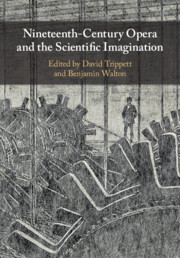Book contents
- Nineteenth-Century Opera and the Scientific Imagination
- Nineteenth-Century Opera and the Scientific Imagination
- Copyright page
- Contents
- Figures
- Tables
- Music Examples
- Contributors
- Acknowledgements
- Introduction
- Part I Voices
- Part II Ears
- Part III Technologies
- Part IV Bodies
- 11 Excelsior as Mass Ornament
- 12 Automata, Physiology and Opera in the Nineteenth Century
- 13 Wagnerian Manipulation
- 14 Unsound Seeds
- Bibliography
- Index
14 - Unsound Seeds
from Part IV - Bodies
Published online by Cambridge University Press: 07 August 2019
- Nineteenth-Century Opera and the Scientific Imagination
- Nineteenth-Century Opera and the Scientific Imagination
- Copyright page
- Contents
- Figures
- Tables
- Music Examples
- Contributors
- Acknowledgements
- Introduction
- Part I Voices
- Part II Ears
- Part III Technologies
- Part IV Bodies
- 11 Excelsior as Mass Ornament
- 12 Automata, Physiology and Opera in the Nineteenth Century
- 13 Wagnerian Manipulation
- 14 Unsound Seeds
- Bibliography
- Index
Summary
With this image of a curtain hiding and at the same time heightening some terrible secret, Max Kalbeck began his review of the first Viennese performance of Richard Strauss’s Salome. Theodor W. Adorno picked up the image of the curtain in the context of Strauss’s fabled skill at composing non-musical events, when he identified the opening flourish of Strauss’s Salome as the swooshing sound of the rising curtain. If this is so, the succès de scandale of the opera was achieved, in more than one sense, as soon as the curtain rose at Dresden’s Semperoper on 10 December 1905.
Critics of the premiere noted that the opera set ‘boundless wildness and degeneration to music’; it brought ‘high decadence’ onto the operatic stage; a ‘composition of hysteria’, reflecting the ‘disease of our time’, Salome is ‘hardly music any more’.The outrage did not end there.
- Type
- Chapter
- Information
- Nineteenth-Century Opera and the Scientific Imagination , pp. 303 - 334Publisher: Cambridge University PressPrint publication year: 2019

